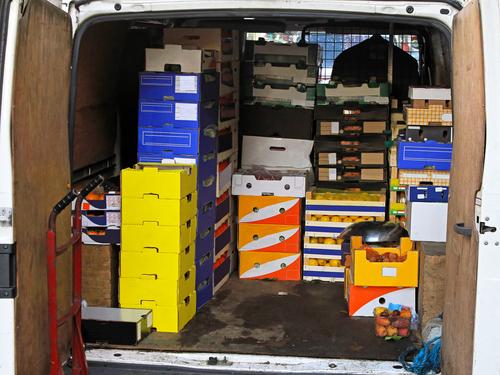Why I Really Need the Internet of Things
The police called the other day to let me know they had recovered a package I didn’t know was lost. UPS had left it on my doorstep, where a thief nabbed it. When he found the package contained a new doorbell, he must have decided it wouldn’t have much value at the local swap meet. So he tossed it, along with 15 other non-valuable packages, on the side of the road, and from there it was recovered. With all the technology we have to track packages and receive delivery notification texts, I really had to wonder why we don’t have the technology to track a package to a “safe” delivery. But as I thought about it, I realized we do. We have cell phones with more Apps than I can remember what to do with, we have GPS, we have automated package tracking with “instant delivery” notification, and we have home appliances with internet connectivity. Combine all those together, and we could do safe package delivery–Amazon Prime would become even better. Here’s how it would work. When Amazon sends you a “shipped” notice, you go online and request a safe delivery (or perhaps you sign up for the service on a subscription basis). You’ve already linked your Wi-Fi enabled (in my case) garage door opener to your profile, so all you need to do is check the box to have the package delivered “safely” to your garage. When the UPS person approaches your house and looks at the delivery requirements (signature, no signature, over 21, etc.) on their tablet, “safe delivery–place package in the garage” appears. He or she checks the box, and their GPS location and the package tracking number are sent to Amazon, which verifies the information. If everything is correct, the garage door opens via Wi-Fi command, package is delivered and delivery confirmation is checked by the UPS person. Amazon closes the door, verifies via remote status the door is closed, and then tells you via text the package is delivered, in the garage, and the door is confirmed closed. There may be variations and exceptions, but they can be handled. Oh, and if you’re worried about the UPS person “exploring your garage,” you can have it all recorded via your motion-detecting security camera. Yes, we have all of this technology today. All we need is an app to link it all together and make it happen. There are other use cases of the Internet of Things, such as: My sprinkler system talks to the weather service (and maybe local gardening experts) and figures out when to decrease or increase watering, or when to skip days when it’s raining or snowing. I am sure they can do a better job than I do; usually I am too late in the spring (dear, did you notice the plants are turning brown?), too late in the fall (dear, did you notice that a swamp that is forming in the yard?). As with Prime, you could associate premium services with this. My cell phone talks to the landline and keeps track of when I’m home (which is a “cell free zone” for all carriers). I always forget to forward one to the other, and then I’m either yelling “call my house, I am at home right now,” or wondering why my cell has not rung for four hours when I’m away. And no, I don’t want to have to subscribe to one carrier and put in a microcell. All of these examples, and many more, are possible today. Someone only has to write the apps, and the consumer has to be willing to give control over to the “Internet of Things.” Jay Thomas is a Business & Product Technology consultant. He has held executive positions with large companies (IBM, Siemens) as well as start-ups. Most recently, Thomas was the Senior Vice President of Global Services & Operations at Narus, a start-up that was acquired by the Boeing Company. Image: Baloncici/Shutterstock.com


